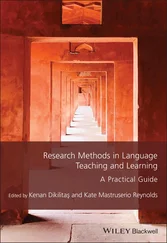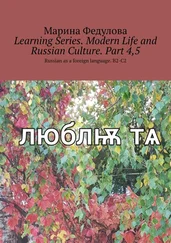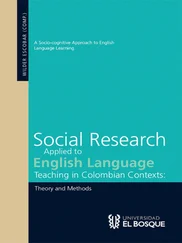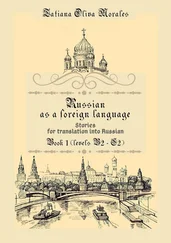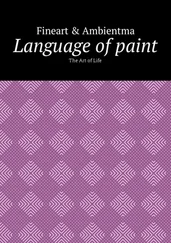This new pedagogical consciousness understands education firstly as an independent cultural activity that has to be brought into the form of art.32
In both his goals and methods, Socrates presents a clear contrast to the Sophists. As opposed to the wide-ranging programs of the Sophists, Socrates saw the paramount aim of all education to be the attainment of a deeper knowledge of the soul and herein a realization of the highest possibilities of Self. His methods were based on his recognition of his own lack of knowledge, thus making possible a true questioning; a dialectical conversation in which the other had to draw conclusions on his own. In this sense he considered the teacher’s role as comparable to the art of the midwife ( maieutikos ) – assisting in the birth of productive thinking and self-discovery. Socrates says in Theaetetus ,
For one thing I have in common with ordinary midwives is that I myself am barren of wisdom. The common reproach against me is that I am always asking questions of other people but never express my own ideas about anything, because there is no wisdom in me; and that is true enough. And of the reason of it is this, that God compels me to attend the travail of others, but has forbidden me to procreate.33
This dialectical approach contrasts strongly with the Sophist approach which was closely tied to their rhetorical skills. Lichtenstein sees the essential distinctions in the ways the Sophists and Socrates each perceived education as an art as originating in the highly disparate nature of their respective educational visions:
Socrates could be misunderstood as a Sophist, but he was far more radical in his much deeper understanding of education as an art, because he saw education as an ethical art. Art demands knowledge and ability. Art realises and moulds into a ‘work’ what had previously been an imaginative ‘draft’ and image, also clearly and objectively perceived as a ‘task’ to be accomplished. Thus, one must know what one wants. The Sophists who desired to be the arbiters of education, lacked exactly that essential concept underlying all education – ‘the knowledge of the Good’.34
Building on the teachings of Socrates, Plato designed the first encompassing educational philosophy and system, which was to become the foundation of his ideal Republic. His educational concepts beginning with kindergarten age addressed all stages of schooling, ending in the rigorous philosophical Academy which for a select few ended at the age of 35. In considering the historical development of the concept of teaching as an art, he can be viewed as a central figure whose thinking not only shaped his own times, but strongly influenced later periods as well.
Plato’s concept of paideia can only be understood in the context of his understanding of the eternal nature of knowledge in which the process of learning is inextricably tied to the immortality of the human soul:
As the soul is immortal, has been born often and has seen all things here and in the underworld, there is nothing which it has not learned; thus it is in no way surprising that it can recollect the things it knew before, both about virtue and other things. As the whole of nature is akin, and the soul has learned everything, nothing prevents a man after recalling one thing only – a process men call learning – discovering everything else for himself, if he is brave and does not tire of the search, for searching and learning are, as a whole, recollection.35
His view of the human soul as inherently possessing an ultimate knowledge which for Plato is the equivalent of the ultimate Good, also implies that the discovery, or re-discovery, of this knowledge is an inborn and driving force in all learning. Werner Jäger writes,
What is essential for Plato here is the insight that the truth of Being is ‘present’ in the soul. This insight initiates a process of seeking and methodological self-awareness. The search for the truth is nothing other than the development of the soul and that content which naturally lies within it. This arises from a deep longing originating in the soul itself.36
The learning process required in helping an individual to experience that eternal unity which he is capable of knowing, implies a bringing together of those separate parts which have ‘fallen out’ of this whole. In this sense the art of teaching is seen as being comparable to the art of healing. Lichtenstein writes,
The Platonic educational ideal is therefore simply this – to enable the human being to become human. As he is, the human being is only on the surface a whole; in reality, he is sorely divided within. To become whole, he must be educated and formed. The art of education is thus like the art of medicine, in that it aims to bring the forces of the soul into a state in which these inner forces can rule naturally and be ruled by each other naturally.37
Plato’s understanding of padeia contrasts with that of the Sophists in that the function of education is not seen to lie in the forming and development of different capabilities, but rather in the realization of the predestined potentials inherent in human nature. Jäger writes,
Paideia is not simply a stage of transition in the development of the human being in which certain spiritual and intellectual abilities are developed, but rather its significance is broadened to encompass the completion and realization of the human being in accordance with his nature.38
The role of the teacher as midwife is thus understood as helping the learner to give birth to and then sustain his own learning processes. The art of teaching lies in helping learning. Wilhelm Flitner writes,
…it comes down to this – that one “learns to learn.” Whoever can do this therefore relates everything to the idea of the Good itself; he learns philosophically and he learns to philosophize. This learning leads to knowledge about the Good and to a love of justice and all the other virtues.39
Hence, in contrast to the Sophists, Plato does not construct his didactical framework from the perspective of the teacher, but from the standpoint of the learner. 40
In helping the learner to realize this goal, the dialectical method of Socrates becomes the fundamental basis of his didactical concept. Through a dialectical approach, it becomes possible for the learner to find his own way through the different stages of knowledge which necessarily precede the highest form of understanding and knowledge. Through answering the necessary questions, a latent, eternal knowledge is awakened: for Plato, the dialectical principle becomes the key to going past a material understanding of the world and ultimately perceiving reality – the Idea – behind the material world.
The immense and differentiated artistry required in the teacher’s use of the dialectical method was based not only on his posing the appropriate questions, but on precise listening, and the exact nature of his responses, often given in the form of examples ( Paradeigma ). This was considered to be a long and difficult process, requiring an extraordinary degree of attention and presence. The paradigm of this degree of artistry was, of course, Socrates.
In the end, the full realization of this process is seen not only as constituting the highest realization of artistry in teaching, but as the essence of the process of learning. Through the artistry of the teacher, the learner acquires a knowledge which is not teachable , but only learnable . Jäger writes,
… truly, this new concept of knowledge offers an insight into a kind of cognition which can not be ‘externally’ taught, but which through correct guidance of thought arises within the soul of the seeker itself. The charm of Plato’s Socratic art of conversation lies in the fact that now that we have come close to grasping the idea, he does not offer us this conclusion ready-made, but allows us to find it ourselves. Indeed, the new Padeia can not be taught…41
Читать дальше

